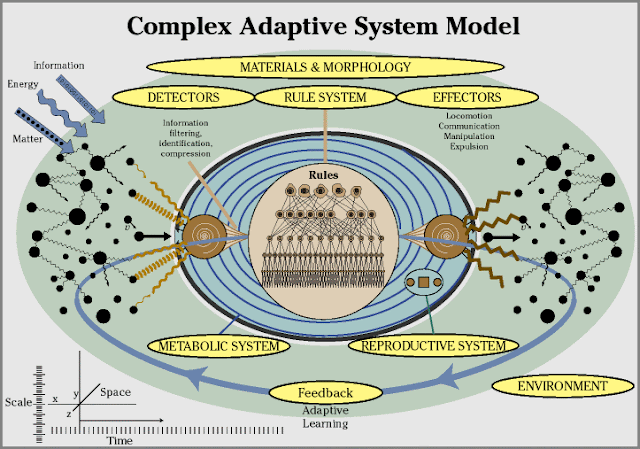Angels Fear Revisited: Gregory Bateson’s Cybernetic Theory of Mind Applied to Religion-Science Debates
Abstract Gregory Bateson intended his posthumous book Angels Fear as an approach to the scientific explanation of natural phenomena in the living world based on cybernetics that would not be so narrowly mechanistic that it triggers a fundamentalist reaction. This issue is newly urgent in the contemporary context of global religious conflict, resurgent fundamentalism, and the intelligent design debate. A redefinition of mind in terms of process and organization sufficient to analyze both evolution and learning, and an application of the Russellian theory of logical types to explanatory systems are central to his approach.
Keywords Gregory Bateson, evolution, intelligent design, mind, metamessages, systems theory, fundamentalism, cybernetics, double bind, schizophrenia, logical types
Introduction
The interdisciplinary conference brought together in Copenhagen in August 2005 by Professor Jesper Hoffmeyer was a fitting climax to the Gregory Bateson Centennial. First, because my father sought ways to make what he was saying accessible and useful to biologists, but second, because the broader interdisciplinary conversation was essential to preserve the weave of Gregory’s thinking. For biologists to discover what may be useful in his work it is necessary to consider writings that are primarily oriented to other disciplines, about, for instance, mental illness, where much of his thinking about communication can be found, or religion. Gregory regarded religions as efforts to understand the living world that might encode insights yet to be explored in other contexts, as exemplified in his comparison between Genesis, in which order is imposed on the natural world by god, and a New Guinea origin myth in which order is immanent in the material world and it is disorder that needs to be defeated. His primary approach, even in discussing matters that his colleagues declined to discuss, was as a scientist, but he regarded a sense of wonder at the natural world as a valuable corrective to the limitations of science.
Bateson’s Redefinition of Mind
The rule when Gregory began work as a scientist, as he expressed it, was perfectly clear: “in scientific explanation, there should be no use of mind or deity, and there should be no appeal to final causes. All causality should flow with the flow of time, with no effect of the future upon the present or the past. No deity, no teleology, and no mind should be postulated in the universe that was to be explained”.
The turning point for his thinking at the Macy conferences on cybernetics, was reflected in the title Warren McCulloch gave to the second conference in 1946: “Teleological Mechanisms and Circular Causal Systems.” In that title there is already an expression of the particular epistemological exploration that engaged Gregory for the rest of his life: cybernetics could be looked at as a way of understanding what looks like final cause or purpose in systems where self-corrective feedback loops provide for an “effect of the future on the present.” If causation does not always flow with the flow of time, we need a way of talking about it without postulating an external agent or deity.
Because of this characteristic, particularly in living systems, Gregory defied taboo by redefining the word “mind” to refer to material systems so organized that they have the immanent capacity for self-correction. Gregory listed six “criteria of mental process” in Mind and Nature: “A mind is an aggregate of interacting parts… triggered by difference … requiring collateral energy …, [and] circular (or more complex) chains of determination … [resulting in] transforms (i.e. coded versions) of events … disclosing a hierarchy of logical types immanent in the phenomena”. I mention a seventh in Angels Fear that we discussed just before his death, the uneven distribution of information. He might have argued that this was entailed by one of the others but I put it forward because of his emphasis on the importance of parts of any system not having full information about other parts.
An examination of this list reveals that although Gregory is speaking of material systems dependent on physical energy, the process involves non-material abstractions and communication: triggering by difference, coding, and logical types.
























































